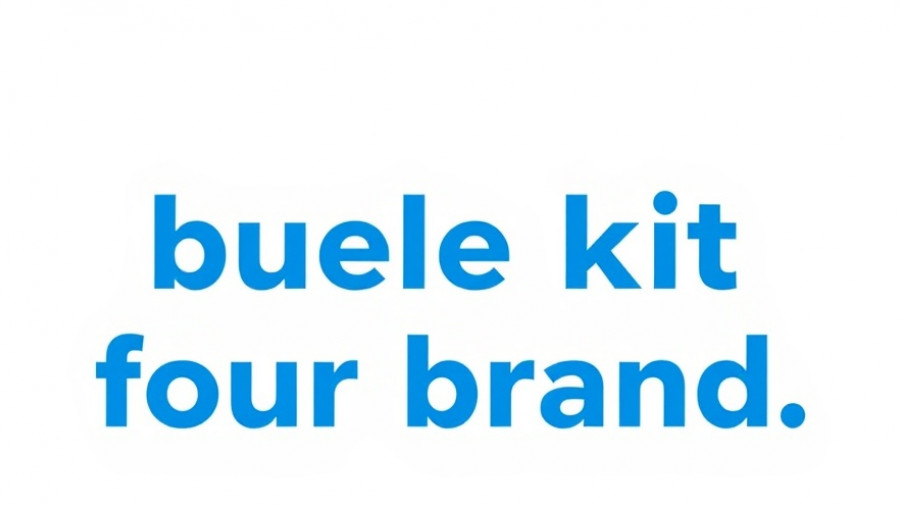
Understanding Brand Differentiation in Today's Market
In an era where nearly half of consumers can’t differentiate between brands, as revealed by Gartner's research, brand differentiation has become essential for survival in an oversaturated market. It's not merely about having a flashy logo or a catchy tagline; it’s about creating a compelling identity that resonates deeply with consumers. Effective brand differentiation allows your company to carve out mental real estate in a prospect's mind, leading to increased brand loyalty, reduced customer acquisition costs, and a solid market presence.
Powerful Ways to Differentiate Your Brand
Here are six exemplary brands that have successfully distinguished themselves in their respective markets, along with actionable strategies to help your business do the same:
1. Product-Led Innovation: Revolut
Revolut has transformed banking by offering a product blend that customers can’t help but recommend. Combining multiple features into a frictionless app has led to a product-led growth strategy that makes Revolut unforgettable. This is an essential lesson: invest in creating a core product that exceeds customer expectations and embrace continual innovation.
2. Compelling Content Marketing: Better Trail
With a unique combination of education, stunning visuals, and storytelling, Better Trail engages its audience with valuable content that enhances customer retention. As a local business owner, focusing on impactful storytelling that aligns with your brand values can help forge stronger connections with your audience.
3. Emotional Connection: Coke
Brands that evoke emotional responses often have a competitive edge. Coca-Cola's marketing campaigns, like 'Share A Coke,' create associations between happy moments and the brand. Small businesses can leverage this by aligning their narratives and values with topics that matter to their target audience, fostering an emotional connection that translates to loyalty.
4. Unique Experiences: Build-a-Bear Workshop
Providing a differentiated experience can add significant value. Build-a-Bear allows customers to create personalized stuffed animals, providing a memorable experience that goes beyond simply making a purchase. Consider how your business can offer unique experiences, such as DIY workshops or personalized products, to set yourself apart.
5. Strong Visual Identity: Oatly
Oatly effectively stands out not just with its product but through its quirky visual branding and unique packaging. Small businesses should invest in creating a consistent and memorable visual identity that encapsulates their brand philosophy, ensuring they stand out in a competitive landscape.
6. Exceptional Customer Service: Zappos
Zappos has built its brand around customer service excellence. Providing exceptional service can turn a customer's negative experience into a positive one, actively increasing word-of-mouth referrals. Local retailers could follow Zappos’ lead by prioritizing customer satisfaction, actively measuring and improving their service quality.
Strategic Insights for Brand Differentiation
As you consider your brand differentiation strategies, here are actionable insights to keep in mind:
Assess Your Unique Selling Points
Identify the core values that differentiate your brand from competitors. This could involve top-quality products, unrivaled customer service, or a strong commitment to social causes that resonate with your audience.
Create a Strategic Brand Narrative
Building an authentic story around your brand can significantly enhance your connection with customers. Share your journey, your mission, and what you stand for to cultivate loyalty.
Utilize Customer Feedback to Innovate
Engage your customer base in product development processes to ensure you're meeting their expectations and needs. This fosters community and helps refine your offerings.
Focus on Consistency
Consistency in branding, from customer service to marketing communications, builds consumer trust. When customers know what to expect, they are more likely to return.
Invest in Customer Experience Technology
Enhancing customer experience, whether through website usability, personalized interactions, or streamlined services, fosters loyalty and recurring business. Implementing CRM systems can significantly aid in managing customer relationships.
Embracing Brand Differentiation for Long-Term Success
In conclusion, understanding and implementing effective brand differentiation strategies is crucial for small and medium-sized businesses aiming to thrive in a competitive landscape. By learning from these successful brands and adopting the actionable insights outlined, you'll enhance customer loyalty, improve market visibility, and ultimately drive sales. Take the leap and explore innovative ways to differentiate your brand in today’s fast-paced market.
Call to Action: To dive deeper into brand differentiation and learn how to effectively implement it for your business, download our comprehensive guide. Equip yourself with strategies that will set your brand apart and attract loyal customers.
 Add Row
Add Row  Add
Add 




Write A Comment